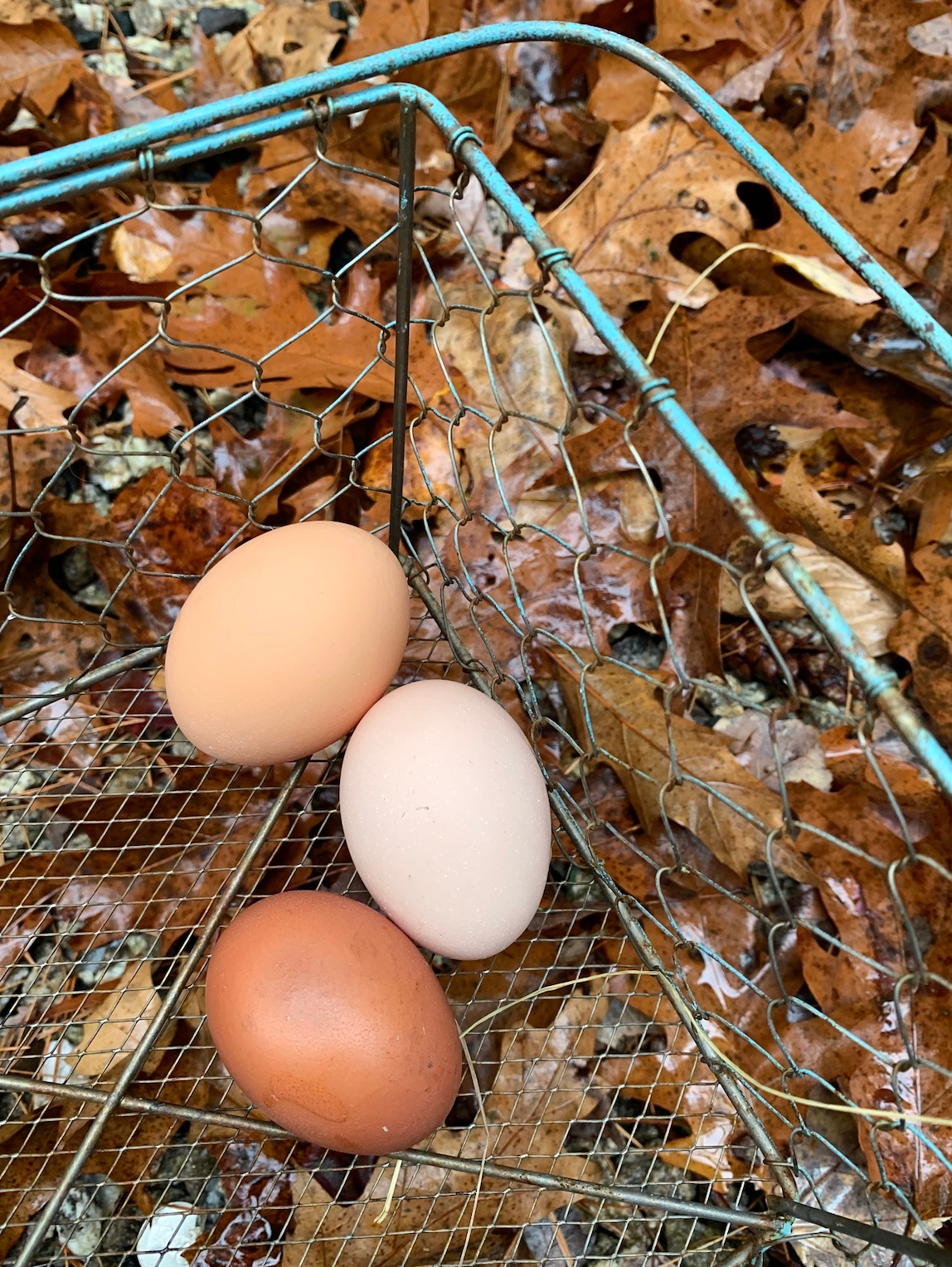Will My Egg Count Change in the Fall?

Will My Egg Count Change in the Fall?
Chickens usually start laying eggs when they are around 20 weeks or five months old. Some breeds will start a little younger, and some a little older. They’ll lay eggs pretty reliably for the next two to three years. After that, the older they get, the less frequently they’ll lay eggs. The older the chicken, the larger their eggs can get, too!
In my little backyard homestead, chickens don’t have to be productive to be important. They are pets as much as they are breakfast-providers, so they have a home here no matter how many eggs they lay (or don’t).
Once a hen starts laying eggs, you can probably count on her to lay about 250 eggs per year for the first two years (depending on the breed, size, and health of your hen). After that, she’ll slowly drop her egg production by about 5 to 10 percent per year. A hen can live up to eight or ten years, but by then, she may only lay about 75 eggs a year, or even less.
But you might be surprised to discover that your chickens’ egg production will change throughout the year.
Season Egg Changes
A hen’s biological clock, if you will, changes depending on the season. In the fall, the diminishing daylight signals your hens to slow down or even stop producing eggs. This reduces the chances that chicks are born in the dead of winter, when they are unlikely to survive. It also helps your hens to conserve their energy during the cold, dark winter when there is less food available and they need to use their calories to keep warm.
Most hens will need 12 to 15 hours of daylight to keep their reproductive systems running. This means, as the daylight hours shrink in the fall and winter, egg production will slowly drop off, depending on the breed and age of the hen.
As the daylight hours begin to extend in the early spring, your hens will naturally return to laying.
Other factors, such as molting or trauma (for example, losing flock members to predators), can also temporarily reduce the egg production of your flock.
It’s hard to predict how many eggs you will actually get over the winter, because there are so many variables, including breed, climate, location, and age and health of your chickens. If keeping eggs year round is of importance here are a few tricks that may help your hens laying through those cold months.
How to Increase Fall and Winter Egg Laying
Artificial Light
Some people find success in putting a light inside the chicken coop. Artificial light can mimic the daylight that keeps your hens laying. However, hens do need some hours of darkness every night so they can sleep. You’ll want to make sure they get at least 6 hours of darkness and no more than 18 hours a day of real and artificial light combined.
You can use a timer to make this easy. Don’t be afraid to experiment with how many hours per day you need the light on in your coop. And always make sure the light is safe for your hens. A broken lightbulb can injure chickens or even start a fire, so look for safe options.
Keep your hens healthy.
Healthy hens will lay more eggs than unhealthy hens. Make sure they have enough high-quality food and a draft-free, dry place to sleep at night. And of course, plenty of fresh water supplemented with Avaplex® to boost immunity, reduce stress and keep your flock healthy year round.
Consider cold-hardy breeds.
There are a few breeds that are more likely to lay eggs year round.
-
Leghorns. Leghorns are popular chicken breeds for backyards because they are big producers - as many as 320 eggs a year. They are one of the breeds most likely to lay all year round. ’ They aren’t the most snuggly chickens, although they are friendly with humans.
Leghorns can be pretty flighty, which helps them dodge predators, and they are good foragers. However, you’ll need to take extra care of your leghorns in the winter cold. They have large combs and wattles that are very susceptible to frostbite. They also aren’t very good broody hens, so they aren’t very likely to sit on their eggs to give you new chicks.
-
Rhode Island Reds. These chickens are hardy and adaptable, and don’t seem to mind the cold weather. They are big egg producers, so they are pretty likely to lay eggs all year round. The hens are chatty and friendly with people, but the breed can be aggressive to other hens.
Roosters can also be aggressive, even to people, so you might want to consider a different breed for your flock’s protector.
-
Plymouth Rock. This old-fashioned breed is one of the oldest breeds of chicken in American history. They lay a lot of eggs all year round, so they’re a good choice if you want some fall egg layers. They’re also quiet, friendly, and get along well with other breeds. They don’t go broody often, but they do make good mothers.
The meekness of a Plymouth Rock chicken meekness makes them more susceptible to being bullied by other breeds, so you may need to keep an extra close watch on your flock if you have more aggressive hens. The biggest downside to plymouth rock hens is that they only lay for a couple of years. But that’s ok - they’re great bugeaters that love to forage and help keep your yard free of ticks.
Don’t be alarmed if your hens’ egg production drops off in the winter. You can choose to ride it out, supplementing with store bought eggs, or you can try some strategies to keep your hens laying all winter long.





